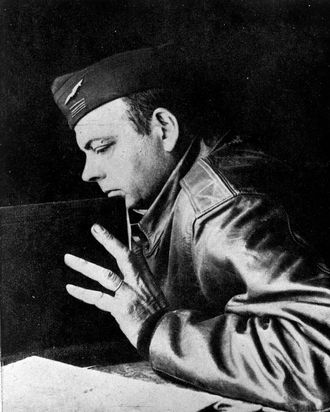
We admirers of bittersweet French whimsy were heartened yesterday to see the first full-length English trailer for a new film adaptation of The Little Prince. Good lord, it looks wonderful.
The 1943 book on which the film is based is, of course, a beloved treasure of childrenÔÇÖs literature. Its author, the perfectly named Frenchman Antoine de Saint-Exup├®ry, was an extraordinary, dashing figure: a commercial pilot who, upon the outbreak of the World War II, began flying reconnaissance missions for the French Air Force. Saint-Exup├®ry wrote plenty in addition to The Little Prince, most of it for adults ÔÇö though it takes a heart of grimy stone for readers of any age not to be moved by the plight of the homesick young royal.
But here I cast a slight aspersion in the direction of asteroid B-612. The Little Prince is lovely, full of gentle allegory and cozy metaphysics. (ÔÇ£It is only with the heart that one can see rightly,ÔÇØ explains the Prince, ÔÇ£what is essential is invisible to the eye.ÔÇØ) It also feels, in some ways, like a cozier counterbalance to his earlier nonfiction masterpiece Wind, Sand and Stars, first published in 1939, and a book thatÔÇÖll make you behave more boldly for at least day or two after you finish it, I promise.
Wind, Sand and Stars is a series of adventures, Saint-Exup├®ryÔÇÖs recounting of his time working as a mail carrier for Aeropostale. The events, described in shimmering prose, would be riveting on their own ÔÇö death-defying journeys across the snowy Andean cordillera; searching for water after crashing in the Sahara ÔÇö but itÔÇÖs the meaning they, and the act of flight, take on that makes the book glow. For Saint-Exup├®ry, who disappeared on a flight over the Mediterranean in 1944, flying is being, and an escape from, as he writes, ÔÇ£the stale bureaucracies ÔǪ where a manÔÇÖs life sinks into the peat.ÔÇØ You donÔÇÖt have to know a wing strut from a wing flap to understand the authorÔÇÖs urge to soar ÔÇ£behind all seen things,ÔÇØ and get to where ÔÇ£lies something vaster ÔǪ a portal or a window opening on something other than itself.ÔÇØ
In its wry melancholy and soothing philosophizing, the tone of Wind, Sand and Stars is similar to The Little Prince, but whereas the latter work was softened by dewy fantasy and the comforts of plot, here the stakes are life and death. Which is to say worthwhile. Indeed, after escaping numerous crashes thanks to a little guile and a lot of luck, Saint-Exup├®ry disappeared on a flight over the Mediterranean in 1944. He was only 43 years old, but itÔÇÖs hard to call his disappearance a tragedy when heÔÇÖd already seen, and written, in Wind, about stuff like this:
The first stars tremble as if shimmering in green water. Hours must pass before their glimmer hardens into the frozen glitter of diamonds. I shall have a long wait before I witness the soundless frolic of the shooting stars. In the profound darkness of certain nights I have seen the sky streaked with so many trailing sparks that it seemed to me a great gale must be blowing through the outer heavens.
And if that doesnÔÇÖt do it for you, the parts in the book where he matches wits with desert bandits probably will.

